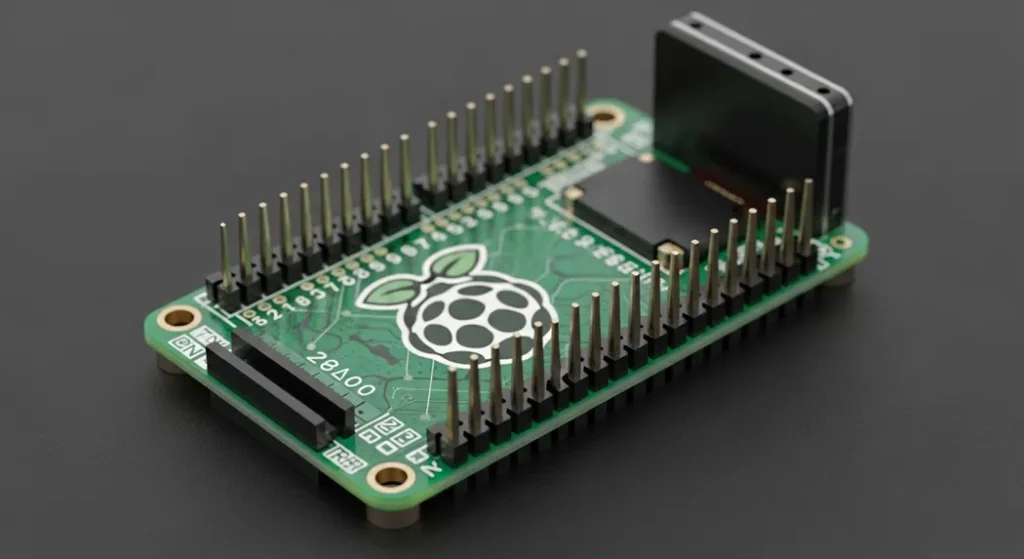Introduction to Batteries and Their Working Principles
Ever picked up a flashlight or your phone and thought about what keeps it running?. That little power pack we call a battery is doing some serious work behind the scenes. Batteries are everywhere your car your laptop even your smoke detector and they are all different built for specific jobs. Lets take a walk through the world of batteries exploring what they are, how they work and why they matter in our daily lives. This is not just about tech specs its about understanding the magic that powers our world. Global battery demand is expected to grow more than five-fold by 2030, with lithium-ion technologies projected to represent over 90% of that market. Understanding battery chemistry isn’t just theoretical—it’s essential for matching performance, cost, and safety.
What’s Inside a Battery?
Picture a battery as a tiny chemical factory. Its got a couple of key players an anode (the negative side) a cathode (the positive side) and an electrolyte that lets ions shuffle between them. When you connect a battery to a device a chemical reaction kicks off electrons flow from the anode to the cathode through your device creating the electricity that makes things go. Its like a dance where the anode gives up electrons, the cathode grabs them and the electrolyte keeps everything in balance. This basic setup called an electrochemical cell, is the heart of every battery whether its powering a toy or a Tesla. For a closer look at how these components come together, check out Wikipedia: Electrochemical Cell.
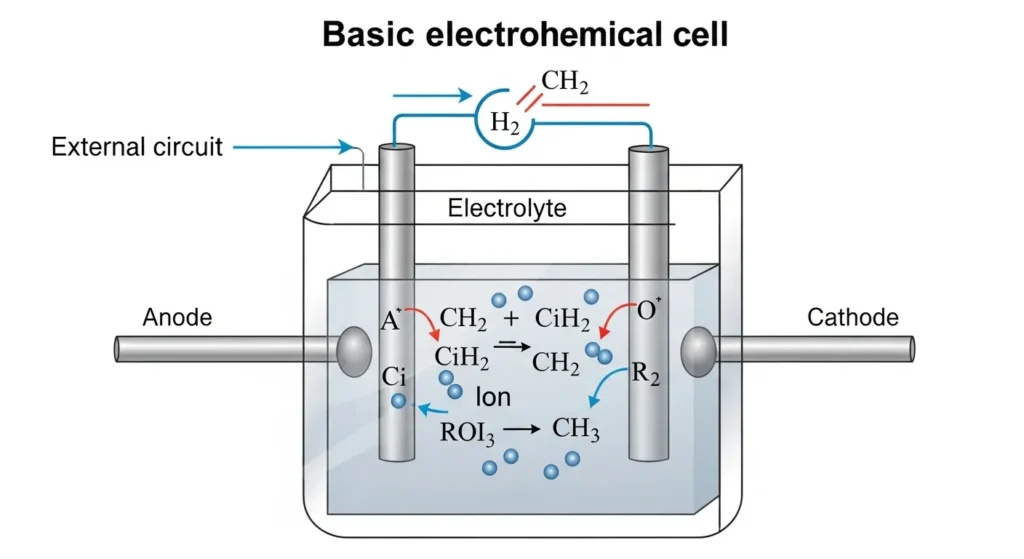
The Two Big Families: Primary and Secondary Batteries
Batteries come in two main flavors primary and secondary. Primary batteries are the one-and-done type you use them until they are drained then toss them. Think of the AA batteries in your TV remote they are simple cheap and great for devices that don’t need a lot of juice over time. Secondary batteries, on the other hand are rechargeable you can zap them back to life with a charger. Making them perfect for things like your phone or electric car where you’re constantly using and reusing power.
This distinction matters because it shapes what a battery can do and how you use it. Primary batteries are like a quick snack convenient but gone once you’re done. Secondary batteries are more like a reusable water bottle, ready to be refilled for the long haul.
To dig deeper into battery classifications, see BBC Science: How Batteries Work.
Primary Batteries: The Single-Use Heroes
Lets start with primary batteries. These are the ones you probably grew up with, popping them into a Game Boy or a wall clock. A common example is the zinc-carbon battery, which gives you about 1.5 volts. Its got a zinc anode and a manganese dioxide cathode with an electrolyte like ammonium chloride keeping things moving. These are affordable and great for low-drain stuff like remote controls or flashlights. Then there the alkaline battery also 1.5 volts but with more staying power thanks to its zinc and manganese dioxide combo in a potassium hydroxide electrolyte. You will find these in everything from toys to smoke alarms.
There also the lithium battery not to be confused with lithium-ion which pumps out around 3 volts and lasts a long time. These are the go-to for things like cameras or medical devices, where you need reliable power without frequent replacements. A user on an electronics forum once shared, I swapped out my smoke detector’s alkaline batteries for lithium ones, and they have lasted three years without a peep. That kind of longevity is why lithium batteries are a favorite for critical devices.
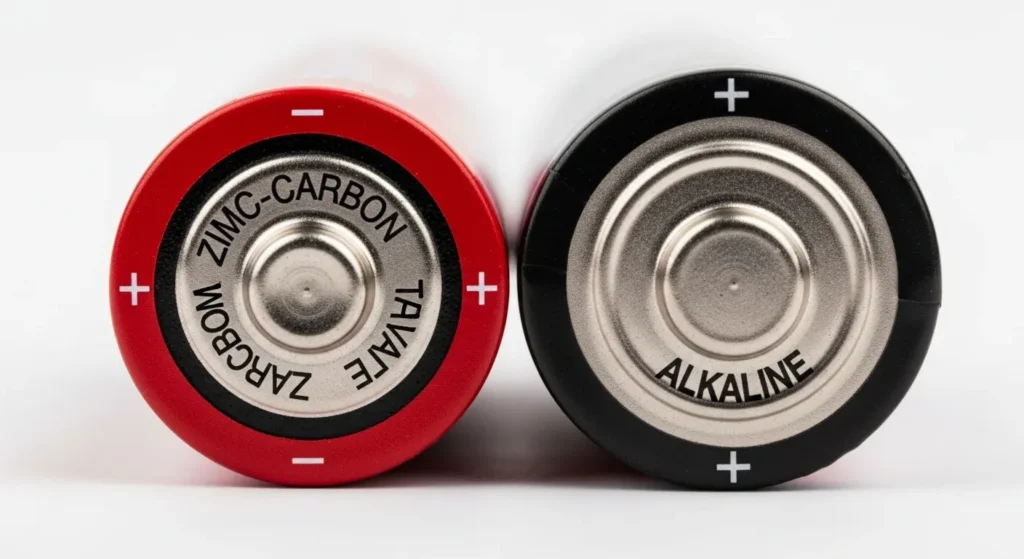
Secondary Batteries: The Rechargeable Workhorses
Now, lets talk about secondary batteries the ones you can recharge. These are the backbone of our tech-heavy world. Take lead-acid batteries for example. They are the heavy hitters in your car delivering 2 volts per cell with lead plates and a sulfuric acid electrolyte. They are rugged reliable and great for starting engines or powering UPS systems. But they are heavy and need occasional maintenance like topping up the electrolyte.
Then there the nickel-cadmium (NiCd) battery which gives about 1.2 volts per cell. These are tough as nails, used in power tools and older cordless phones but they have got a downside called the memory effect if you don’t fully discharge them before recharging they can lose capacity. A hobbyist I read about on a DIY blog said “My NiCd drill battery still works after a decade but I have to be careful not to charge it halfway”.
Lithium-ion batteries are the rock stars of the rechargeable world powering your phone laptop and electric vehicles. With 3.7 volts per cell and a lightweight design, they pack a lot of energy. Their secret? A lithium compound cathode a graphite anode, and a liquid or gel electrolyte. They’re efficient but can be finicky overheating or overcharging can cause trouble, which is why your phone has all those safety circuits.
For a detailed look at rechargeable batteries, visit HowStuffWorks: Battery Types.
How Batteries Actually Work
So, how does a battery turn chemicals into electricity? It’s all about a redox reaction short for reduction-oxidation. At the anode, a material like zinc in a zinc-carbon battery oxidizes, shedding electrons that flow through your device to the cathode, where something like manganese dioxide grabs them. Meanwhile, ions move through the electrolyte to keep the charges balanced. It’s a bit like a bucket brigade passing water: electrons move one way, ions another, and your device gets the power it needs.
Take a lithium-ion battery. The lithium ions shuttle between the anode and cathode during charging and discharging, while electrons flow through the circuit to do the work. It’s a delicate balance, and if you’ve ever noticed your phone getting warm while charging, that’s the battery working hard to manage that flow.
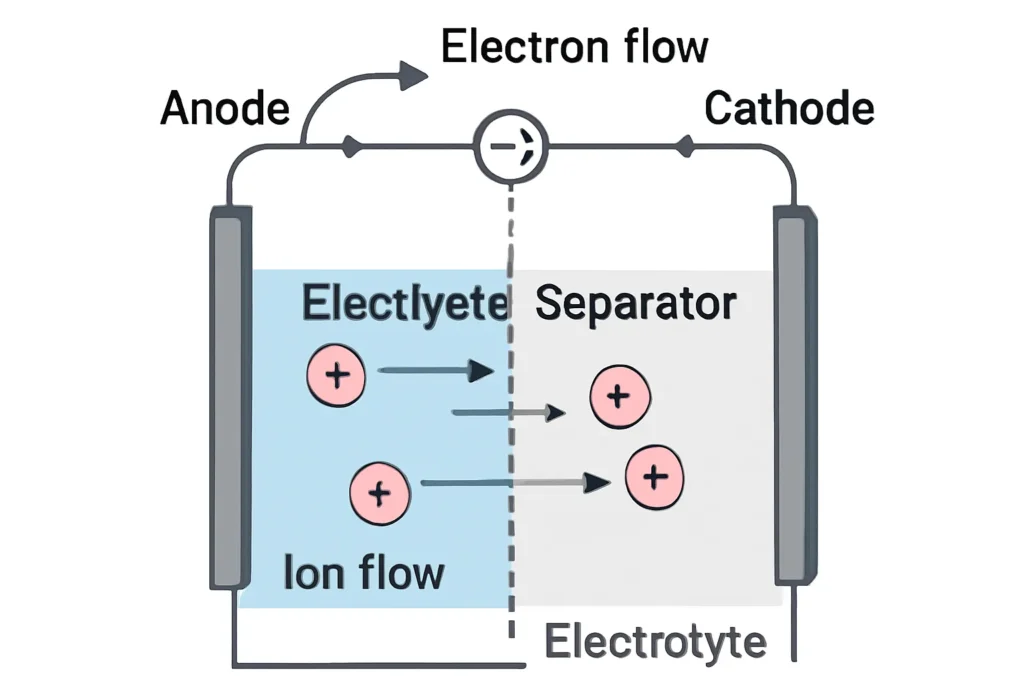
Comparing Battery Types: Which One Right for You ?
Choosing the right battery depends on what you need it for. Here’s a quick comparison to help you decide:
| Battery Type | Voltage | Rechargeable? | Common Uses | Pros | Cons |
| Zinc-Carbon | 1.5V | No | Remote controls, flashlights | Cheap, widely available | Short lifespan, low power output |
| Alkaline | 1.5V | No | Clocks, toys, smoke alarms | Long shelf life, reliable | Not rechargeable, disposal issues |
| Lithium | 3V | No | Cameras, medical devices | Long lifespan, high voltage | Expensive, not rechargeable |
| Lead-Acid | 2V/cell | Yes | Cars, UPS systems | Durable, high power output | Heavy, requires maintenance |
| Nickel-Cadmium (NiCd) | 1.2V/cell | Yes | Power tools, cordless phones | Robust, good for high-drain use | Memory effect, contains cadmium |
| Lithium-Ion | 3.7V/cell | Yes | Phones, laptops, EVs | High energy density, lightweight | Can overheat, expensive |
This table should give you a sense of what each battery brings to the table and where it shines or doesn’t. For a more focused comparison of popular rechargeable options, here’s a chart on Li-ion vs. NiMH vs. Lead-Acid vs. LiFePO4 (a safer variant of Li-ion):
| Battery Type | Energy Density (Wh/kg) | Cycle Life | Weight | Cost | Safety | Best For |
| Lithium-Ion (Li-ion) | 150-250 | 500-1,000 | Light | Medium-High | Moderate (risk of thermal runaway) | Portable electronics, EVs |
| Nickel-Metal Hydride (NiMH) | 60-120 | 300-500 | Medium | Low-Medium | High | Power tools, hybrid cars |
| Lead-Acid | 30-50 | 200-300 | Heavy | Low | Moderate (acid leaks possible) | UPS, car starters |
| Lithium Iron Phosphate (LiFePO4) | 90-160 | 2,000+ | Medium | Medium | Very High (stable, no fire risk) | Solar storage, e-bikes |
You can see the video for “changing a car key battery”
Where Batteries Show Up in Your Life
Batteries are everywhere, quietly making your day easier. That alkaline battery in your kid’s toy keeps the noise going (for better or worse). The lithium-ion battery in your phone lets you scroll through social media or navigate a new city. Lead-acid batteries get your car started on a cold morning, and lithium batteries in medical devices like pacemakers keep people safe. Even in big setups like data centers or hospitals batteries like sealed maintenance-free (SMF) ones ensure the lights stay on during a power outage.
I remember when my car battery died in the middle of nowhere. A quick jump-start got me going, but it made me appreciate how much we rely on these little powerhouses. Whether it’s a tiny button cell in a watch or a massive battery bank in an electric vehicle, batteries are the unsung heroes of our connected world.
For more on battery applications, read Scientific American: The Future of Batteries.
Real-World Examples:
Best Batteries for Specific Projects To make choosing easier, here are tailored recommendations based on common projects: – Best Battery for Drones: Lithium Polymer (LiPo) batteries are ideal for most drones due to their high power-to-weight ratio and quick discharge rates, enabling agile flight. Sample specifications: “For a racing drone, a 4-cell (4S) LiPo pack (14.8 V, 1300-2200 mAh) offers high discharge current for agile maneuvers.” For longer endurance, opt for Lithium-Ion (Li-ion) packs like 18650 cells, which offer extended flight times (up to 20+ minutes) but add weight. Avoid heavy options like Lead-Acid. Example: A 3S or 4S LiPo (11.1V-14.8V, 1300-2200mAh) for FPV drones. – Best Battery for UPS Systems: Valve-Regulated Lead-Acid (VRLA) batteries are the standard for cost-effective UPS due to their reliability and high surge capacity. For longer life and maintenance-free operation, consider Lithium-Ion or Nickel-Cadmium (NiCad) for high-temperature environments. Example: A 12V 7Ah VRLA for small home UPS, lasting 3-5 years with proper use. – Best Battery for Arduino Projects: Rechargeable Lithium-Ion (e.g., 18650 cells) or 9V Li-ion batteries are versatile for portable Arduino setups, providing stable 5-9V output via regulators. For low-power projects, NiMH AA packs work well. Avoid 9V alkaline for long-term use due to quick drain. Example: A 3.7V 18650 Li-ion with a step-up converter for sensor-based projects, lasting hours longer than disposables. While LiPo gives better power-to-weight for drones, it requires careful handling and proper battery management; vs Li-ion which is safer but heavier.”
Keeping Your Batteries Happy
Taking care of batteries isn’t rocket science, but a little attention goes a long way. For rechargeable ones like lithium-ion, avoid letting them drain completely keeping them between 20% and 80% charge is ideal. Overcharging can stress them out, so use a charger with an auto-cutoff. For lead-acid batteries, like the one in your car, check the electrolyte levels if it’s not a sealed model, and consider an equalization charge to balance the cells.
Store batteries in a cool, dry place heat is their enemy, speeding up chemical wear. The electrochemical reactions in batteries involve oxidation at the anode and reduction at the cathode, producing a flow of electrons through an external circuit. For example, in a zinc-carbon battery, zinc at the anode oxidizes, releasing electrons, while manganese dioxide at the cathode undergoes reduction, accepting those electrons. The electrolyte, such as ammonium chloride in zinc-carbon batteries or sulfuric acid in lead-acid batteries, facilitates ion movement to maintain charge balance. This process generates the electrical energy that powers devices, from small gadgets to large systems like electric vehicles. To explore more about battery chemistry and its applications, visit The Guardian: Battery Recycling Challenges.
- “Follow international safety standards such as IEC 62133 (for rechargeable sealed battery safety) and UL 2054 for household/commercial battery systems.”
- More precise storage temp: “Store batteries ideally between 5 °C – 25 °C (41-77 °F); avoid above 45 °C (113 °F) which degrades lifespan substantially.”
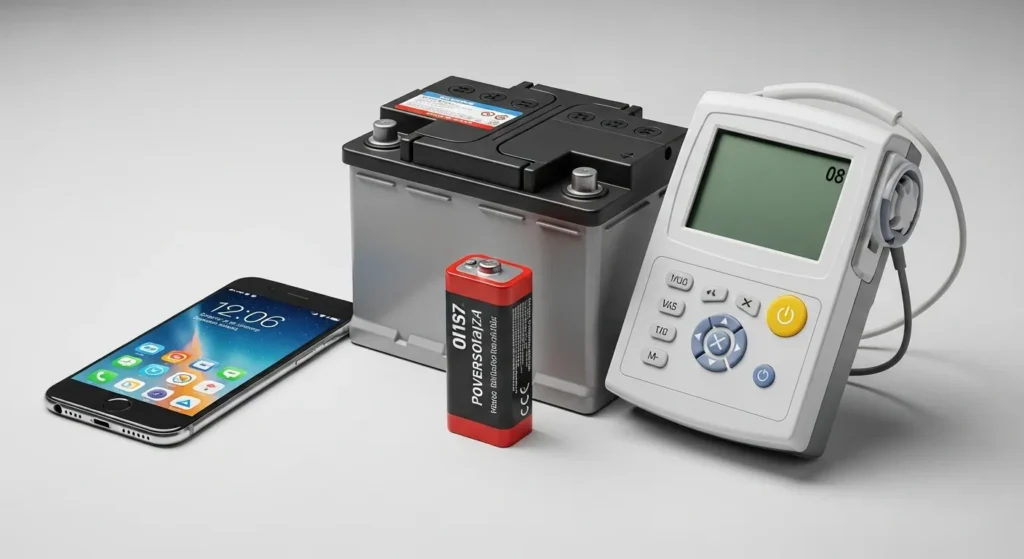
Looking Ahead: The Future of Batteries
Batteries are evolving fast. Researchers are working on solid-state batteries, which use a solid electrolyte for better safety and energy density imagine electric cars that go farther on a single charge. There’s also a push for greener materials to reduce the environmental impact of mining things like cobalt. Recycling is another big focus, with new methods to recover more from old batteries, cutting down on waste.
I recently read about a startup developing batteries with plant-based materials, which sounds wild but could be a game-changer for sustainability. It’s exciting to think about where this tech is headed, making our devices more efficient and our planet a little happier. For the latest trends in battery technology, check out CNN: Innovations in Battery Technology.
- Solid-state batteries are expected to offer up to twice the energy density of current lithium-ion designs, with commercialization likely around 2027-2030 as major companies like Toyota, Samsung, and QuantumScape scale up R&D.”
- “Recycling technologies are improving: modern processes now recover over 90% of key metals (like cobalt, nickel), and circular economy models aim for reuse of battery modules in second-life applications.”
Wrapping It Up
Batteries might seem like small, everyday things, but they’re a big deal. From the zinc-carbon AA in your remote to the lithium-ion pack in your electric car, they’re built on clever chemistry that keeps our world moving. Understanding how they work those redox reactions, the anode-cathode dance helps you appreciate their role and take better care of them. Next time you pop a battery into something, you’ll know there’s a little chemical magic making it all happen. Keep them charged, store them right, and maybe one day we’ll all be using batteries that are kinder to the earth.
Battery Selection Flowchart (Text-Based)
Start → What is your main priority?
Need long backup time?
→ Choose Lead-Acid or LiFePO4
(Ideal for UPS systems, solar power setups)
Need something lightweight and portable?
→ Choose Li-ion or LiPo
(Great for drones, mobile devices, wearables)
Looking for low cost and simplicity?
→ Choose NiMH or Alkaline
(Suitable for toys, remotes, Arduino projects)
Want high safety and no maintenance?
→ Choose LiFePO4 or Sealed VRLA
(Safe, durable, and maintenance-free options)
Note on Battery Safety
Always handle batteries with care:
- Li-ion and LiPo batteries can overheat, swell, or catch fire if overcharged, short-circuited, or punctured.
- Always use proper chargers and follow manufacturer guidelines.
- Dispose of batteries responsibly — never throw them in regular trash.
| Battery Type | Chemistry | Typical Uses | Advantages | Limitations |
|---|---|---|---|---|
| Alkaline | Zinc-Manganese dioxide | Remote controls, flashlights | Long shelf life, inexpensive | Non-rechargeable |
| Lead-Acid | Lead dioxide & lead | Automotive starters, UPS systems | High surge current capacity | Heavy, toxic, limited cycle life |
| Lithium-ion (Li-ion) | Lithium cobalt oxide, lithium iron phosphate | Smartphones, EVs, laptops | High energy density, rechargeable | Sensitive to temperature |
| Nickel-Metal Hydride (NiMH) | Nickel oxide hydroxide & metal hydride | Power tools, cameras | Rechargeable, less toxic | Memory effect, moderate energy |
| Solid-State | Solid electrolytes | Emerging EV tech, wearables | Safer, higher energy potential | Currently expensive, developmental |
Frequently Asked Questions About Batteries
How do lithium-ion batteries work?
Lithium-ion batteries power your phone and laptop through a redox reaction. Lithium ions move from the anode (usually graphite) to the cathode (a lithium compound) through an electrolyte, while electrons flow through the device, creating electricity. Charging reverses this process. For more, see Wikipedia: Lithium-ion Battery.
How to change the battery of a car key?
To change a car key battery, pop open the fob with a small screwdriver or coin, remove the old battery (usually a CR2032), and insert a new one, ensuring the positive side faces correctly. Snap the fob shut and test it. Check your car manual for specifics.
How to change a car key battery?
It’s simple: use a small tool to open your key fob, take out the old battery (often a CR2025 or CR2032), and place a new one with the correct polarity. Close the fob and test the remote. Refer to your vehicle’s guide for model-specific steps.
How to check battery health?
Battery health depends on the device. For smartphones, use built-in settings or apps; for laptops, check system diagnostics; for cars, use a multimeter. Regular checks help catch issues early and extend battery life.
How to check battery health in Android?
Go to Settings > Battery > Battery Health or Usage. Some Android devices, like Samsung, show health stats directly. Alternatively, use apps like AccuBattery to monitor capacity and wear over time.
How to check battery health in iPhone?
Open Settings > Battery > Battery Health & Charging. It shows Maximum Capacity and Peak Performance Capability. A capacity below 80% may suggest it’s time for a replacement.
How to check battery health in laptop?
On Windows, use the Power & Battery settings or generate a battery report via Command Prompt (type powercfg /batteryreport). On macOS, go to System Settings > Battery. Third-party apps like Battery Info View can provide more details.
How to check battery health in Samsung?
Navigate to Settings > Device Care > Battery. Samsung’s diagnostic tool shows battery health, usage, and optimization tips. You can also dial *#0228# for a quick battery status check.
How to check Exide battery warranty online?
Visit Exide’s official website, go to the warranty section, and enter your battery’s serial number or scan its QR code. You’ll need purchase details like the invoice date. Contact Exide support if you hit a snag.
How to check iPad battery health?
iPads don’t have a built-in battery health feature. Use a third-party app like iMazing or connect to a Mac/PC to check via diagnostics software. Look for apps in the App Store that monitor battery capacity.
How to check iPhone battery health?
Head to Settings > Battery > Battery Health & Charging. You’ll see your battery’s Maximum Capacity and whether it supports peak performance. Below 80% capacity often means a replacement is due.
How to check laptop battery health?
For Windows laptops, go to Settings > System > Battery or run powercfg /batteryreport in Command Prompt. On MacBooks, check System Settings > Battery. Apps like HWMonitor provide deeper insights.



